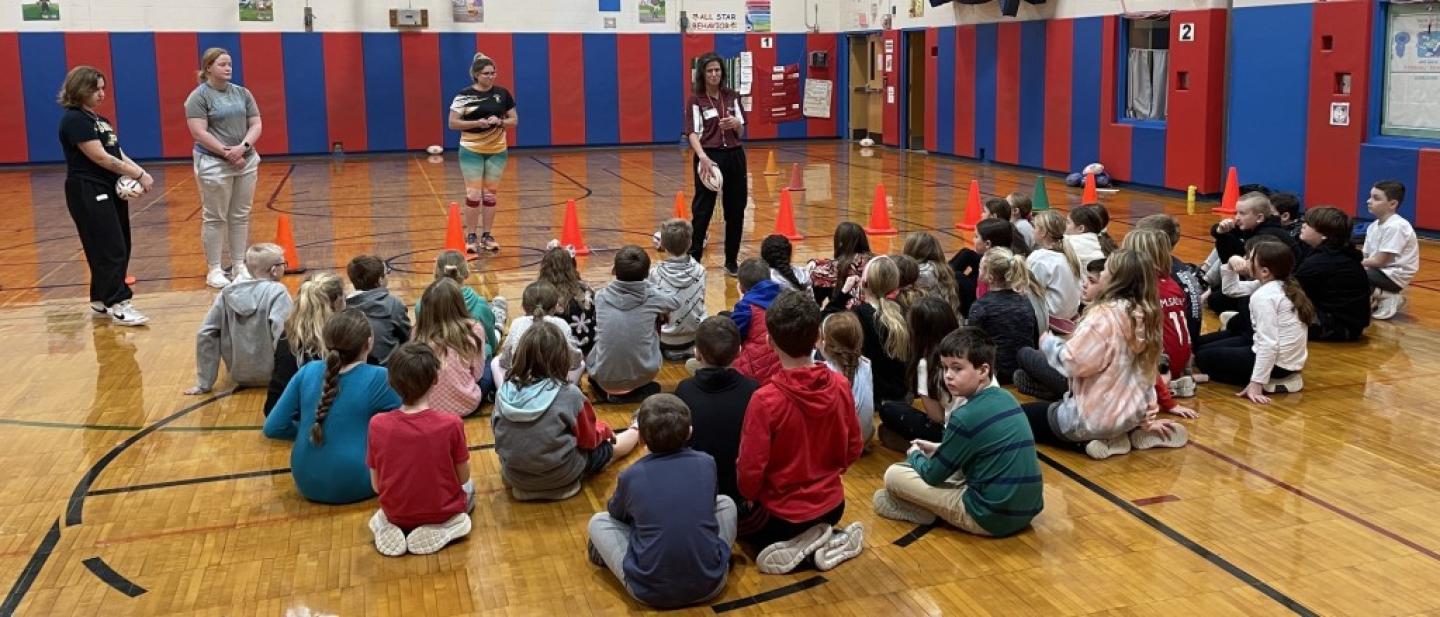It’s easy to say “youth rugby is the future” but how, exactly do you accomplish this?
While it’s good news that youth and HS participation is up about 19%, it’s also true that neglecting growth of the youth game can also spell doom for a program, especially a HS club (which has to re-recruit hard every year) or even a state organization.
We take a quick look at Rugby NY, which is a volunteer-run organization and is working to build numbers at all levels. They have embraced a plan to bring younger kids into the game, even if it’s just getting them to be familiar with it. Rugby NY President Matt Persanis, who runs the Pelham HS team, and Executive Director Rob Sliwinski, who coaches University at Albany, have been visiting schools and networking with gym teachers to spread the rugby word and teach the game to as many kids as possible.
Sliwinski, who is retired, has been able to spend more time making direct visits and has done at least 20 sessions throughout various Upstate New York districts. Persanis has done four or five, mostly Downstate, while Lisa Huff Henrich has stepped in to run sessions in Western New York.
Every time they leave behind eight rugby balls, a ball bag, and some flag belts to plant a seed with the gym teachers to keep that going.
“All we ask is that they use the equipment,” said Persanis.
Persanis has attended various teaching AGMs and conventions. If he is able to make a presentation, he grabs that opportunity. If not, they set up a desk with rugby balls and information and a signup sheet. Within a week they contact everyone who has filled out the sheet.
From there the sessions to take over gym class for a day gets set up. Various coaches or players are drafted in to help out.
“Everybody who comes out to help loves it,” said Persanis.
Persanis has taken along his sons Luke and Caleb (University of Delaware and SUNY New Paltz Rugby, respectively), while Tim Downey (Iona College) and Yohendy Martinez (PlayRugby USA) have also jumped in.
They have demo’d rugby at small districts but also at Yonkers Elementary School (over 600 kids), and Ossining Middle School (over 900 kids). They handle the PE classes all through the day, with 20 to 50 kids at a time. Usually they will spend a short time getting the very basics of passing down, and then run a coaches-vs-kids game, which serves to teach the kids that they need to spread out.
Once they do that, the rest of the class is short games (touch or flag).






















